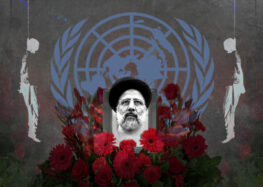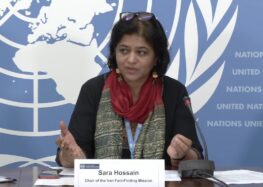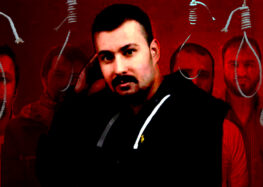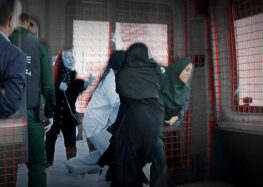Iran: People With Disabilities Face Discrimination and Abuse
Brussels, June 27, 2018–People with disabilities in Iran face discrimination, abuse, and an inaccessible environment, Human Rights Watch and the Center for Human Rights in Iran said in a joint report released today.
The 72-page report, “‘I Am Equally Human’: Discrimination and Lack of Accessibility for People with Disabilities in Iran,” documents the everyday barriers people with disabilities meet when going to government offices, healthcare centers, and when using public transportation. People with disabilities also regularly face stigma and discrimination from government social workers, healthcare workers, and others. Many remain trapped in their homes, unable to live independently and participate in society on an equal basis with others. The Iranian authorities should immediately amend discriminatory laws and practices and create a clear plan for making public services and facilities accessible.
“People with disabilities in Iran are cut off from society because of discrimination and inaccessible public buildings and services,” said Jane Buchanan, deputy disability rights director at Human Rights Watch. “The government should immediately issue statements at the highest level that discrimination against people with disabilities has no place in Iran and make a clear, time-bound plan for ensuring accessibility of transportation, social services, and health care.”
“The government of Iran should make sure that the millions of voices of people with disabilities are properly heard and they are treated as active and equal members of society, not subjects of charity and pity,” said Hadi Ghaemi, executive director of the Center for Human Rights in Iran.
Human Rights Watch and the Center for Human Rights in Iran conducted in-depth interviews with 58 women and men with various disabilities, as well as with disability rights advocates and specialists across Iran.
The World Health Organization and World Bank estimate that 15 percent of the world’s population has some kind of disability. For Iran, with a population of over 80 million, this means approximately 12 million people have some kind of a disability. The government has not collected disaggregated data on the number of people with disabilities, including during the 2016 national census.
Human Rights Watch and the Center for Human Rights in Iran found serious problems in the work of Iran’s State Welfare Organization, the main agency tasked with providing services to people with disabilities. People interviewed said that government social workers insulted and humiliated them and did not provide essential information about services and equipment. They said that the agency’s services and equipment provided for assistance are often of low quality, do not address people’s needs, and can only be obtained through lengthy and complex procedures.
Many of those interviewed said they had to depend on family members or close friends for help with basic needs, such as eating, getting dressed, or daily hygiene. The government has not allocated sufficient resources to develop a system of personal assistants, who can be key to the independence and equality of many people with disabilities.
Public transportation, roads, and buildings are frequently inaccessible. For example, some buses have ramps accessible for people who use wheelchairs or walkers, but bus drivers may not know how to open the ramps. In larger cities with metro systems, some stations have elevators, but they are often out of service. Some wheelchair users resort to using escalators, despite the dangers.
Hassan (not his real name), who uses a wheelchair in Tehran, said: “I try to avoid using escalators, but sometimes I have no other choice. With my heavy wheelchair…, getting on the escalator feels like a suicide [mission]. Once, I almost fell. Had I not been lucky, I could have sustained a deadly injury.”
People with physical disabilities often cannot access medical clinics or hospitals because many do not have ramps or elevators. Blind people and those with low vision said that they do not go to healthcare facilities alone because buildings are not accessible, and staff do not provide them with the assistance they need. Deaf and hard of hearing people said that they cannot use healthcare services independently due to the lack of sign language interpreters.
Medical staff may give treatment to people with disabilities without their informed consent or fail to provide them full and accurate information about treatment and treatment options. For example, electroconvulsive therapy is often unnecessarily carried out without informed consent on people with psychosocial disabilities, mental health conditions, or conditions in which it is not likely to be helpful. The treatment is used in psychiatric hospitals in many countries to treat bipolar disorder and severe depression.
“The first time I had electroshock, a heart physician visited me the day before,” said Jafar (not his real name), who has psychosocial disabilities. “Then, they took me for the shock, and it was only then that I learned what it was. I forgot many things after that. They did it every other day.”
The government of Iran has taken some steps to ensure the rights of people with disabilities. A national agency has begun assessing the accessibility of public buildings. In March 2018, parliament adopted a new disability law that increases disability pensions and extends insurance coverage to disability-related healthcare services. The new law does not explicitly prohibit discrimination, however. Other laws and policies remain discriminatory and some include derogatory language, such as “mentally retarded,” “crippled,” and “insane.”
The International Convention on the Rights of Persons with Disabilities, which Iran ratified in 2009, prohibits discrimination and guarantees the right of people with disabilities to live independently and be included in the community on an equal basis with others. Governments must ensure that the physical environment and services provided to the public are accessible on an equal basis. To achieve this, Iran should prepare a time-bound plan with concrete steps for creating an accessible environment and specifying interim measures to reduce barriers while fulfilling the long-term policy, Human Rights Watch and the Center for Human Rights in Iran said.
“‘I Am Equally Human’: Discrimination and Lack of Accessibility for People with Disabilities in Iran” is available at: https://iranhumanrights.org/2018/06/drr_summary/
PDF: https://iranhumanrights.org/wp-content/uploads/disabilities-iran-report.pdf





